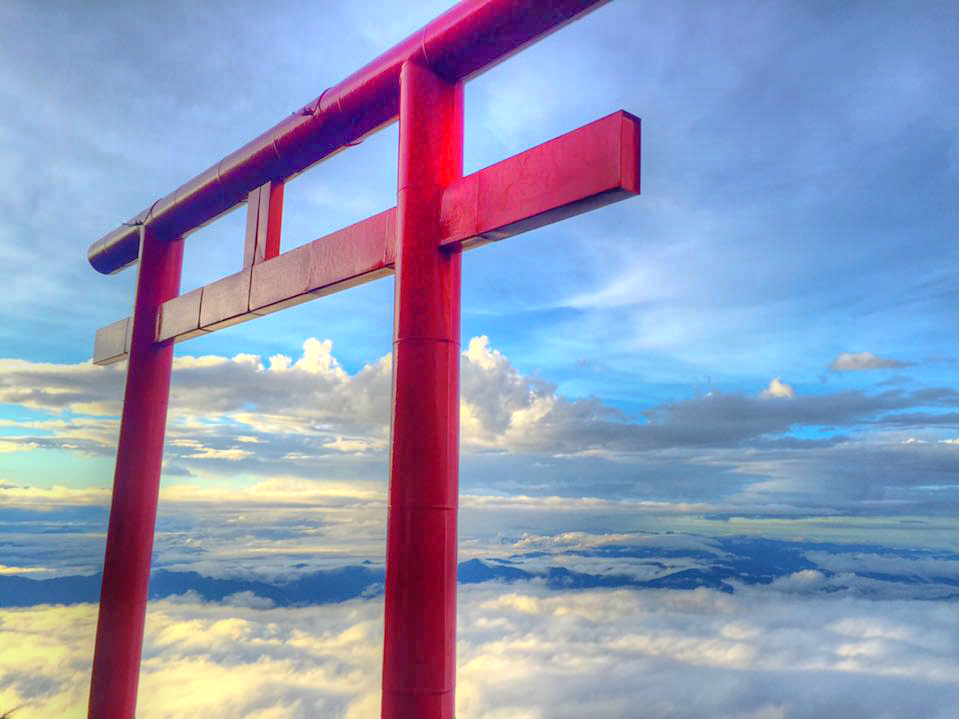Mount Fuji (富士山 Fujisan) is an active stratovolcano which last erupted in 1708. It is the highest and most prominent mountain in Japan which stands at 3,776.24 meters or 12,389 feet. It is located on the border between Yamanashi and Shizuoka prefectures on Honshu island which is about 100 kilometers southwest of Tokyo.
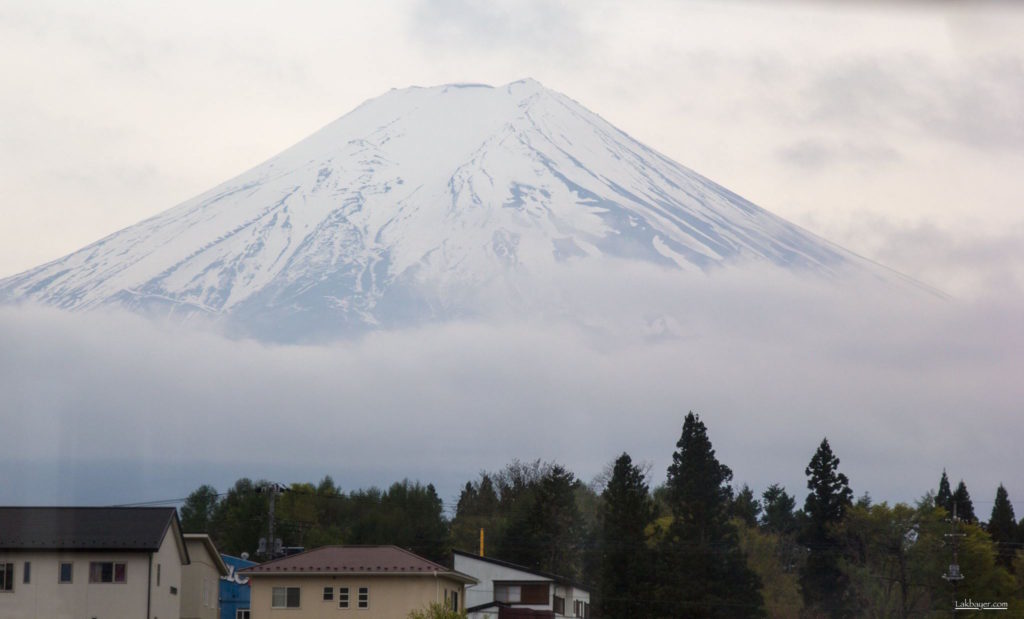
The majestic mountain can be viewed and admired in several ways – on clear days, it can be seen from Tokyo through the observation decks like Tokyo Skytree, Tokyo Metropolitan Government Building, Tokyo Tower, Mori Tower Observatory and the like.
 View from Mori Tower Observatory.
View from Mori Tower Observatory.
Beautiful scenes of Japan with Mt. Fuji as the backdrop can also be seen from the windows of the shinkansen or bullet train towards Kansai (Osaka, Kyoto) or Chubu (Nagano, Niigata) regions. You can also get a glimpse of the mountain while driving along the Tomei Expressway.
Up close experience of Mt. Fuji is also possible through the view spots around the mountain which includes the Fuji Five Lakes – Lake Kawaguchiko, Lake Yamanakako, Lake Saiko, Lake Motosuko and Lake Shojiko. It is also visible in Hakone which is a nearby hot spring town.
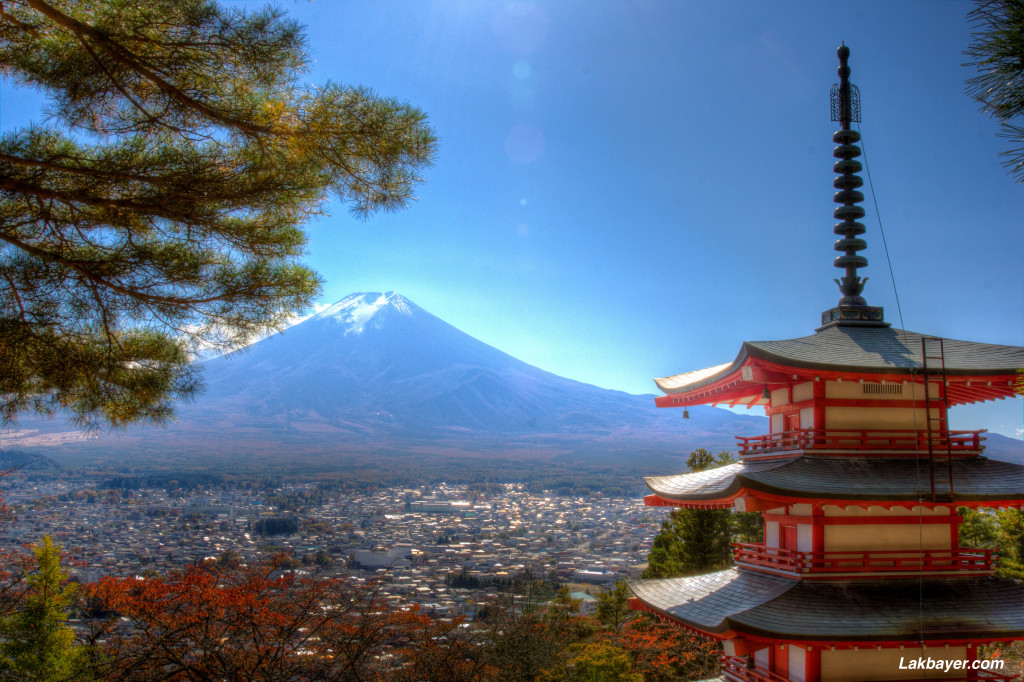 View of Mt Fuji from Chureito Pagoda located near Lake Kawaguchiko.
View of Mt Fuji from Chureito Pagoda located near Lake Kawaguchiko.
Lastly, it is also possible to climb Mt. Fuji during the summer months of July and August. The mountain may look more attractive from afar but experiencing the overnight climb to the summit and waiting for the sun to rise above the sea of clouds along with hundreds of hikers around the world can make one of the most unforgettable memories.
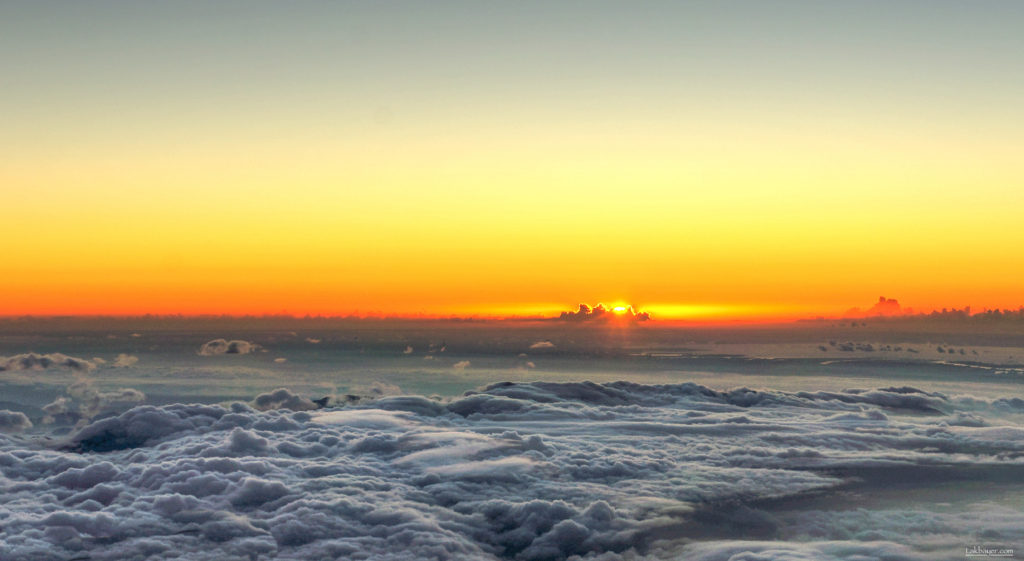 Sunrise view from Mt. Fuji summit.
Sunrise view from Mt. Fuji summit.
Climbing Mt. Fuji
When to climb?
The official climbing season is from early July to mid September. It is the period when the mountain is usually free from snow, which makes the weather relatively mild, the trails and the facilities in the mountain are open. However, the opening and closing times vary from trail to trail. Trail schedule and weather advisories can be checked from www.fujisan-climb.jp.
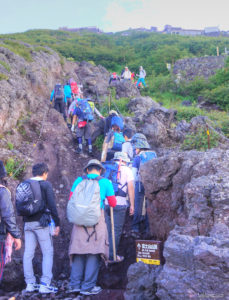 Climbing Mt. Fuji is popular both on locals and foreigners. The climbing season can get very busy during the school vacation which is usually from end July to end August but most especially during the Obon Week in mid August – climbers would even need to stand in queues in some parts of the trails.
Climbing Mt. Fuji is popular both on locals and foreigners. The climbing season can get very busy during the school vacation which is usually from end July to end August but most especially during the Obon Week in mid August – climbers would even need to stand in queues in some parts of the trails.
Despite the queue, climbers would feel the friendly atmosphere while hiking the summit. The camaraderie can be felt among fellow climbers from across the world. It is not uncommon to hear people shouting “Ganbare (do your best)” or patting the shoulders of tired hikers.
Beginners and tourists who wish to climb the mountain are suggested to hike during this period.
What to bring?
In order to experience an enjoyable and a safe hike to the summit of Mt Fuji, it is essential to be properly equipped.
☛ Use proper hiking shoes. Some scetions of the terrain are rocky or steep and wearing the right hiking shoes and socks will prevent you from slipping and help protect the ankles.
☛ Wear proper clothes. Bring clothes suitable for low & high temperatures as well as strong winds. It may be hot and humid during the beginning of the hike but as the night falls, the temperature also starts to drop. The temparature at the summit can drop below zero and strong winds can make it even colder. It is also advisable to bring rain gear, as weather conditions are unoredictable on the mountain. Gloves are also recommended for both coldness and for hiking the rocky sections.
☛ Bring flashlight or head lamps. Since you will be climbing the mountain overnight, the trails would not be illuminated and lights from other hikers will not be enough to lighten your path. Head lamps are usually preferred so your hands are both free and are available.
☛ Bring food and water. It is important to bring enough food and water as mountain huts are quite far from each other. Varous food and drinks are available in the mountain huts but they also cost more than usual. Note that the prices increase with the altitude. There are also no public garbage bins on the mountains, so trash should be carried home.
☛ Don’t forget to bring money. Having enough cash is necessary in order to buy things on the mountain. It is also advisable to bring small change and 100 yen coins.
☛ Use proper hiking bag. Using a backpack is recommended when hiking any mountain. It gives you enough space to put your necessities and it is more convenient to carry. It would also be good to have a rain cover for your backpack.
Other Things you may (optional) want to bring:
▸ Suscreen – Most people start climbing the mountain after lunch and this time of the day could be very hot and sunny. Your descent from the summit can also be very hot and sunny. Putting on sunscreen will prevent you from getting sunburnt.
▸ Hat – Using a hat keep the sun off your head and they also warm your head on the freezing temperature at the summit.
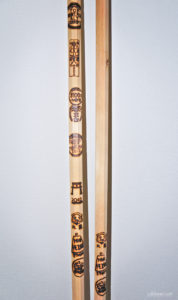 ▸ Small oxygen can – Some people suffer from altitude sickness – headache, dizziness, nausea, and difficulty in breathing, while climbing the Mt. Fuji summit. Using a tanked oxygen is the easiest way to curb the altitude sickness. It is also available at the mountain huts but at a relatively higher price.
▸ Small oxygen can – Some people suffer from altitude sickness – headache, dizziness, nausea, and difficulty in breathing, while climbing the Mt. Fuji summit. Using a tanked oxygen is the easiest way to curb the altitude sickness. It is also available at the mountain huts but at a relatively higher price.
▸ Shades and face mask – When you choose to descend from the Yoshida trail (which is the easiest trail), the entire path is dust. Using shades for your eyes and face mask for your nose and mouth keeps the dust off. Inhaling a huge amount of dust can make your eyes hurt and teary and may cause coughing for several days.
▸ Hiking stick – Wooden sticks are sold at the 5th station and cost about ¥1,500 – ¥2,000. You can get your stick branded at the mountain huts on your hike up the summit. Branding cost from ¥200 – ¥1,000. The branded sticks can serve as a souvenir and chronicle of your Mt. Fuji adventure.
Can I climb alone?
The hike to the summit of Mt. Fuji is technically not difficult and there are many other hikers during the climbing season which makes it possible for an individual to climb alone. However, there are several companies and adventure groups offering group and private tours for people who prefer to have a guide and leave the planning to someone else. Some of which are Japanican, Viator, Willer Express and Tokyo Gaijins.
The hike to the summit of Mt. Fuji as well as the ascent may be long and tiring but it is unarguably rewarding and a memory to keep.
